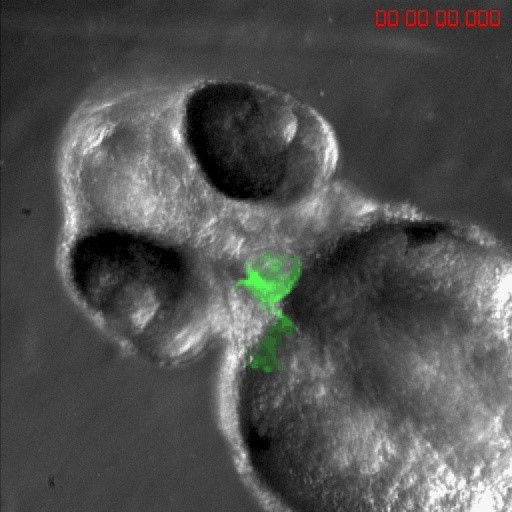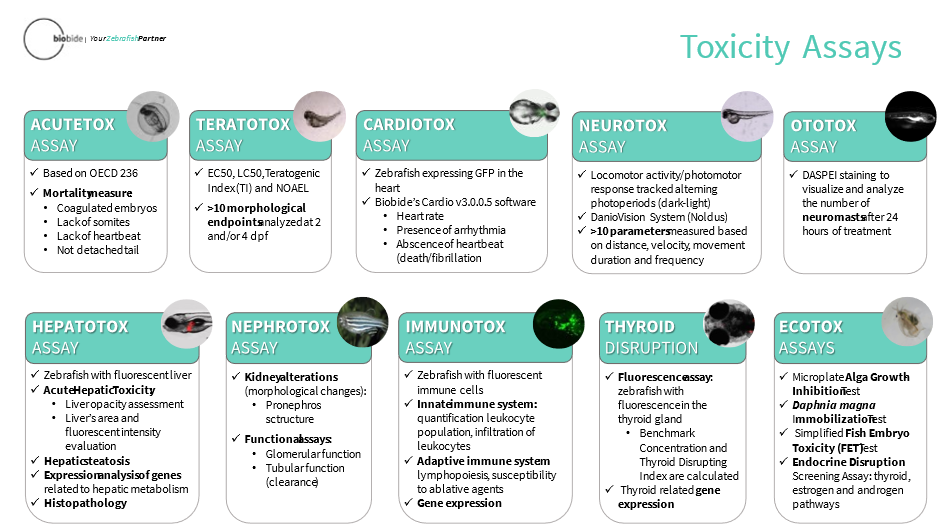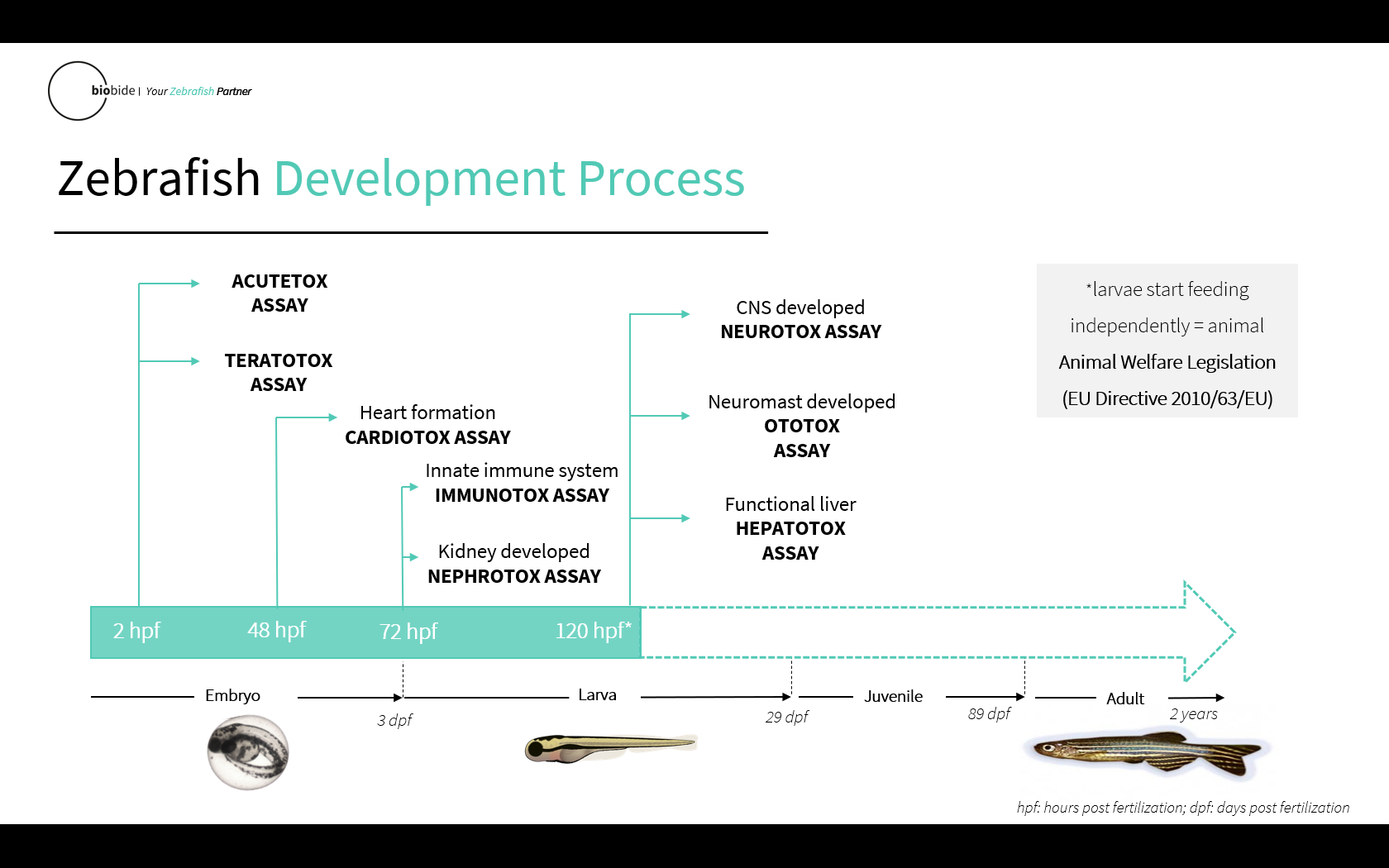Shop
Zebrafish Organ Specific Toxicity Assays: Cardiotox Assay

Zebrafish models are gaining recognition in their applications within several fields, such as developmental biology and toxicology. The advantages of the zebrafish model are mainly its low cost and ease of maintenance and breeding. Moreover, the zebrafish is ideal for research purposes due to its small size, ease of handling and transparency.
Integrating the use of fluorescent reporter genes into the zebrafish model allows the visualization of specific tissues, such as the heart. Despite clear anatomic differences between the zebrafish two-chambered (one atrium and one ventricle) heart and four-chambered mammalian heart, several studies have highlighted similarities in the genes and regulatory networks driving cell fate.
We have automated a method to detect in vivo cardiotoxicity by High Content Screening (HCS) in zebrafish embryos using proprietary software. We target different cardiac effects as arrhythmias, bradycardia, cardiac arrest…
We have validated the Cardioxicity Assay comparing expected cardiotoxic effects in humans with detected Cardiotoxic effects in zebrafish in Biobide.

